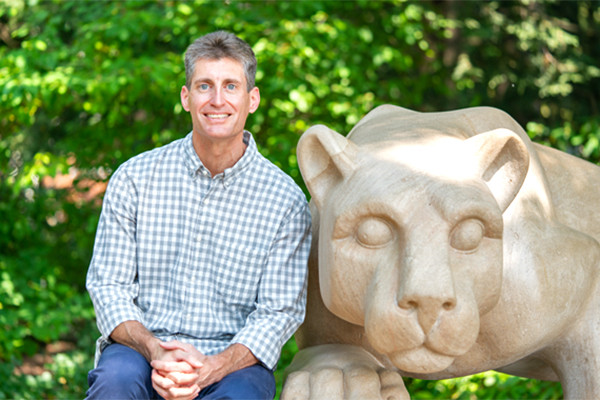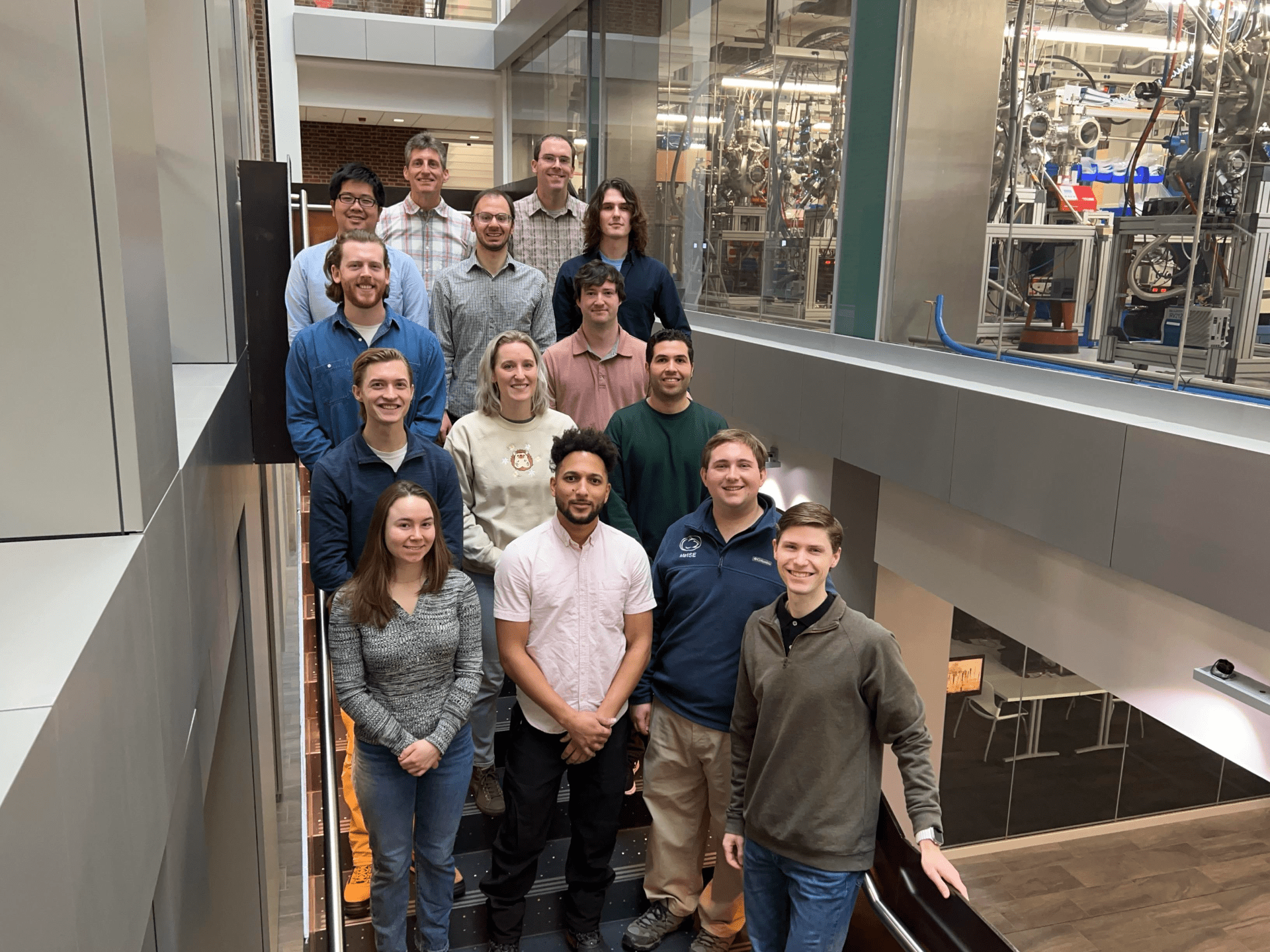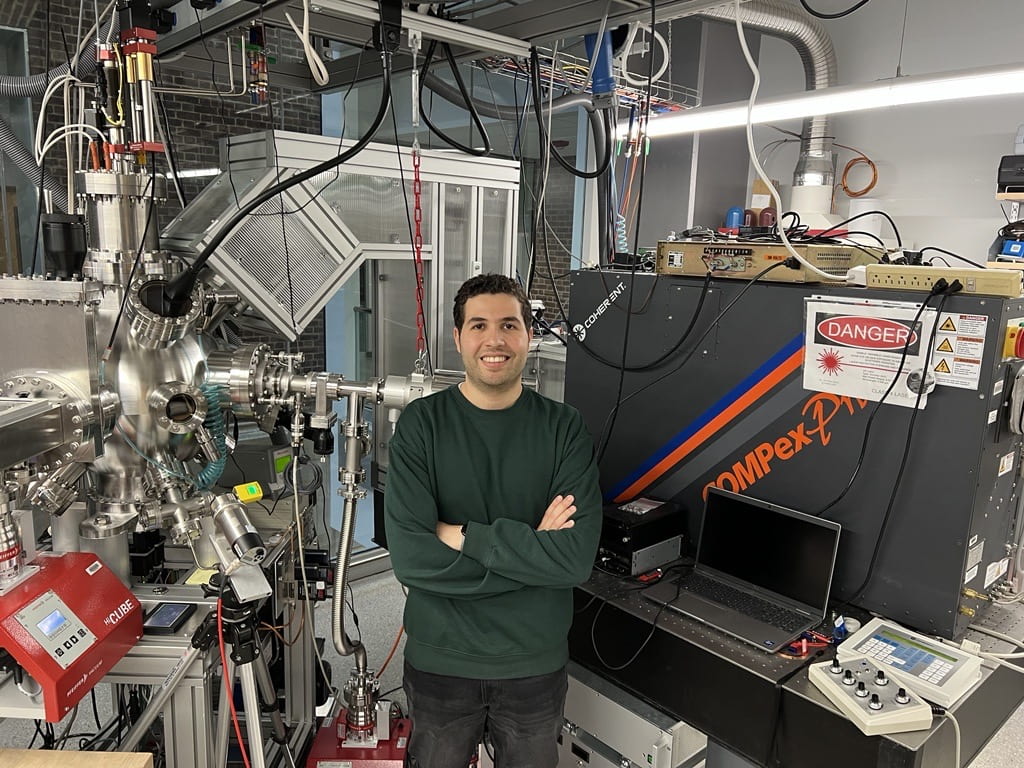
The JPM Research Group at Penn State, led by Jon-Paul Maria, professor of materials science and engineering, continues to be at the forefront of research, pushing the boundaries of what is possible. The group’s pioneering work in not just one, but two, significant areas of research entropy-stabilized ceramics and a new class of ferroelectrics, built on shattering a seventy-five-year-old belief on the limits of ferroelectrics—has established entirely new families of materials and functionalities.
The group is a supportive community of undergraduate and graduate students, postdoctoral researchers, and visiting scholars, who work together on cutting-edge research projects. They specialize in the synthesis, characterization, and application of advanced materials for computer processing and energy storage, for infrared light detection and emission, for future quantum information science applications, and for stability under extreme environments.

"Our research is driven by the need to create materials that can meet and establish future technology demands,” Maria said. “We are exploring new ways to design and synthesize materials to enhance their properties and to improve their sustainability. In many cases, our work is sponsored by the U.S. Department of Defense—the opportunity to serve national needs with our work in this fashion is a tremendous reward.”
The group’s research benefits from Maria's instinctive approach, which leverages orthogonal pathways to solve unanswered challenges in science and engineering. Maria stresses that answers to important technological challenges and entirely new material opportunities can be found in a fundamental understanding of materials science.
“In our case, the nuanced relationships that link a material structure at the atomic scale, the chemical constituents, the synthesis history, and the physical, electrical, optical, thermal, and mechanical properties, are the guiding principles,” said Maria. “Our work on entropy-stabilized materials is a prime example of a simple, but foundational scientific concept, that has inspired an international community to think differently.”
In 2015, the field of entropy-stabilized, or high-entropy oxides (HEOs) emerged following an influential report by the group published in Nature Communications. This groundbreaking work laid the scientific foundation for a new class of materials characterized by their unique ability to accommodate diverse elemental sets into a single crystalline structure, fueled by configurational entropy. Using this “recipe,” one can find new materials that do not occur in nature, with emergent functionalities not seen in traditional oxides.
The concept of high-entropy oxides builds on the principles of high-entropy alloys, where the presence of multiple principal elements leads to enhanced properties such as increased strength and resistance to wear. In HEOs, this multi-element approach results in materials with remarkable thermal stability, ionic conductivity, and catalytic activity.
Maria is rewriting how the synthesis of crystalline phases is thought about. His work in high-entropy oxides is transformative and challenges century-old rules about phase stability, crystalline structure, and composition. This discovery will no doubt lead to exciting new materials—and new discoveries—as researchers navigate this “new world” of entropy stabilized crystal chemistry. Maria’s work has been called “disruptive” to all that is known about crystalline structures.
That work led to a $10 million interdisciplinary research group that Maria leads within the NSF-MRSEC Center for Nanoscale Science (MRSEC) at Penn State, and two $7.5 million Multidisciplinary University Research Initiatives supported by the United States Office of Naval Research.
Last year, Maria and his group attended the fourth International Conference on High-Entropy Materials (ICHEM), a significant conference on high-entropy oxides, the first of its kind to be held in the United States. Maria delivered the keynote address, highlighting the latest advancements and future directions of the field.
In 2018 Maria’s research initiated a new perspective for finding new ferroelectric crystals that he refers to as “ferroelectrics everywhere.” Ferroelectric materials are a historic point of pride for Penn State, which has been an international leader in discovering, developing, and understanding these cornerstone materials for electronics, acoustics, biomedical devices, sonar, optics, transduction, and energy storage applications.
Maria notes that a small number of crystal structures—namely the perovskites—have been the ferroelectric heavy-hitters for nearly eighty years, and he has been thinking about how to find new ones. His ferroelectrics everywhere concept is based on the general knowledge that ferroelectricity often originates within materials that are “confused” under normal conditions of room temperature and atmospheric pressure. That is to say, the structure of such materials at the atomic scale can undergo very small deviations or distortions if exposed to small external forces or electric fields. While these distortions are physically small (like atoms shifting just 1/100th of their diameter) they have a very large electronic consequence, like the ability to store tremendous electrical charge. Perovskites do this naturally. The ferroelectrics everywhere concept simply proposes the possibility to create such distortions in any crystal (as long as it is electrically insulating) by substituting a faction of the host atoms with different ones, where those differences in size and charge are big enough to produce the needed “confusion” from which ferroelectricity can emerge.
In the 2019-20 academic year, the group found two examples: zinc oxide substituted with magnesium and aluminum nitride substituted with boron. These discoveries not only contributed to the community's understanding of ferroelectricity but also found ferroelectric formulations much more compatible with mainstream semiconductor technologies.
Due to the historical leadership and an outstanding cohort of collaborators at Penn State such as faculty members Susan Trolier-McKinstry, Clive Ranaldl, Venkatraman Gopalan, Nasim Alem, Ismaila Dabo, and Thomas Jackson, the ferroelectrics work flourished on campus and is now the foundation for the Three Dimensional-Ferroelectric Microelectronics (3DFeM) Center funded by the U.S. Department of Energy-Energy Frontier Research Center program, with Maria leading one of the two main areas.
The work also caught the attention of industry leaders such as Samsung, Raytheon Technologies, and GlobalFoundries, who are working with Maria and 3DFeM to bring his new materials to commercial viability. In 2023, Applied Materials (AMAT)—the world’s largest semiconductor tooling manufacturer—invited John Hayden, a graduate student at the time, to spend three months at their Materials Engineering Technology Accelerator (META Center), a world-class hub for innovation in materials engineering research and development. There, Hayden worked on developing an aluminum-boron-nitride process. Currently, Penn State and AMAT META Center have a manuscript, nearly through the peer review process, that summarizes this successful effort. “Seeing your ideas make the transition, even those early first steps, from your laboratory into industry is a career highlight,” said Maria.
Maria’s dedication to his innovative research is only comparable to his passion for education. “The successes described in this article are true high points from our lab in which we take great pride, but they should not overshadow our most important research accomplishment: educating, mentoring, and training future science, technology, and society champions,” said Maria. “The graduate and undergraduate members that leave our group are equipped for leadership by their research experiences, because we require them to embrace hard challenges that often yield more failures than successes.
If we, as faculty, provide the necessary information, mentoring, and support to our students, they will develop the knowledge, confidence, and perseverance to do hard things for their entire career. I am incredibly proud of the career paths of our group members and their contributions to science and society,” Maria said.
Maria’s commitment to his students is instrumental in their professional and personal development. “Our department celebrates the outstanding successes Jon-Paul has achieved in research as well as his pivotal role he plays at Penn State in mentoring and educating so many future materials scientists and engineers,” said Susan Sinnott, department head and professor of materials science and engineering. “His guidance and support have helped his students and group members develop successful careers in academia and industry.”

Saeed Almishal, doctoral candidate and current member of the JPM Research Group, has experienced the environment that Maria fosters for his students. "What I appreciate most about Dr. Maria is that he lets me be my true self in research and leads a lab that really fosters creativity—meaning he never dismisses any of my ideas or hypotheses. He always finds a way to provide the resources needed to test them,” said Almishal. “I am also grateful for his presence in the lab whenever I need him and his teachings on how to communicate research. He has taught me how to articulate any dry scientific data into a compelling story."
Maria joined Penn State MatSE in 2018 after spending fifteen years as a faculty member in the Materials Science and Engineering Department at the North Carolina State University (NCSU). He did his postdoc at NCSU in the group of Professor Angus I. Kingon. Maria received his bachelor's, master's, and doctoral degrees from Penn State in ceramic science and engineering, and materials science and engineering, respectively.
Learn more about the JPM Research Group's work and Jon-Paul Maria:
- Ferroelectrics everywhere? | Penn State University (psu.edu)
- Center for Nanoscale Science renewed at $18 million for six years | Penn State University (psu.edu)
- Over $10 million awarded to Penn State for energy center | Penn State University (psu.edu)
- Energy, environmental seed grants awarded to interdisciplinary research teams | Penn State University (psu.edu)
- Five Penn State faculty members receive 2023 Faculty Scholar Medals | Penn State University (psu.edu)
- Jon-Paul Maria elected fellow of American Ceramic Society | Penn State University (psu.edu)
- Welcome to the Penn State MRSEC | MRSEC: The Center for Nanoscale Science (psu.edu)
- INTERNATIONAL CONFERENCE ON HIGH-ENTROPY MATERIALS (ICHEM 2023)

